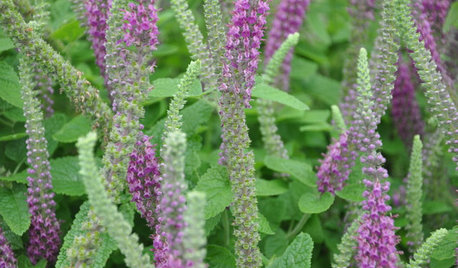Tomato plants hit with plague!!! 911
sheri_nwok
12 years ago
Related Stories

FARM YOUR YARDHow to Farm Your Parking Strip
Get an up-close look at a thriving street-side edible garden, one of many sprouting up in Seattle
Full Story
FARM YOUR YARDHow to Grow Vegetables in Containers
Get glorious vegetables and fruits on your patio with a pro’s guidance — including his personal recipe for potting mix
Full Story
GARDENING FOR BUTTERFLIESGardening for the Bees, and Why It’s a Good Thing
When you discover how hard bees work for our food supply, you may never garden without them in mind again
Full Story
FEEL-GOOD HOME9 Smells You Actually Want in Your Home
Boost memory, enhance sleep, lower anxiety ... these scents do way more than just smell good
Full Story
DECORATING GUIDES12 Deadly Decorating Sins
Are your room designs suffering from a few old habits? It may be time to change your ways
Full Story
FUN HOUZZ10 Things People Really Don’t Want in Their Homes
No love lost over fluorescent lights? No shocker there. But some of these other hated items may surprise you
Full Story
GREEN BUILDINGThe Big Freeze: Inventors Break New Ground to Keep Things Cool
Old-fashioned fridges can be energy guzzlers, but there are more eco-friendly ways of keeping food fresh, as these global innovations show
Full Story





soonergrandmom
sheri_nwokOriginal Author
Related Professionals
La Marque Landscape Architects & Landscape Designers · Barrington Landscape Contractors · Columbine Landscape Contractors · Fort Mill Landscape Contractors · Hampton Bays Landscape Contractors · Kerman Landscape Contractors · Seminole Landscape Contractors · Teaneck Landscape Contractors · Tehachapi Landscape Contractors · View Park-Windsor Hills Landscape Contractors · West Haverstraw Landscape Contractors · Canton Decks, Patios & Outdoor Enclosures · Lincoln Decks, Patios & Outdoor Enclosures · Waukesha Decks, Patios & Outdoor Enclosures · Truckee Decks, Patios & Outdoor Enclosuresmiraje
Okiedawn OK Zone 7
love2garden55
sheri_nwokOriginal Author
sheri_nwokOriginal Author
Okiedawn OK Zone 7
sheri_nwokOriginal Author
sheri_nwokOriginal Author
Okiedawn OK Zone 7
shankins123
Okiedawn OK Zone 7
sheri_nwokOriginal Author
Okiedawn OK Zone 7
elkwc
elkwc
Okiedawn OK Zone 7
sheri_nwokOriginal Author
mksmth zone 7a Tulsa Oklahoma
sheri_nwokOriginal Author
Okiedawn OK Zone 7
cwsooner
Okiedawn OK Zone 7
cwsooner
Rich5658
TraceyOKC
Okiedawn OK Zone 7
shankins123
Okiedawn OK Zone 7